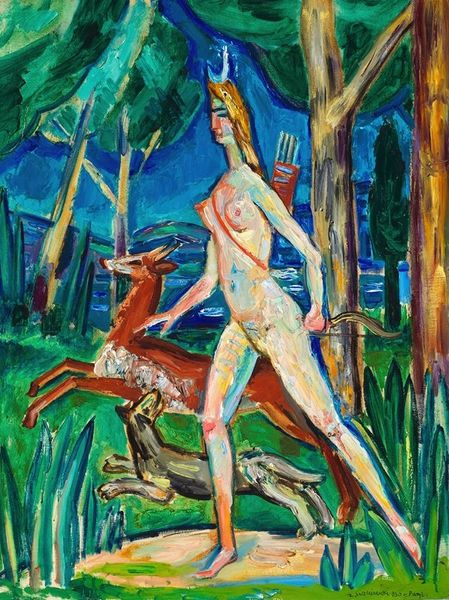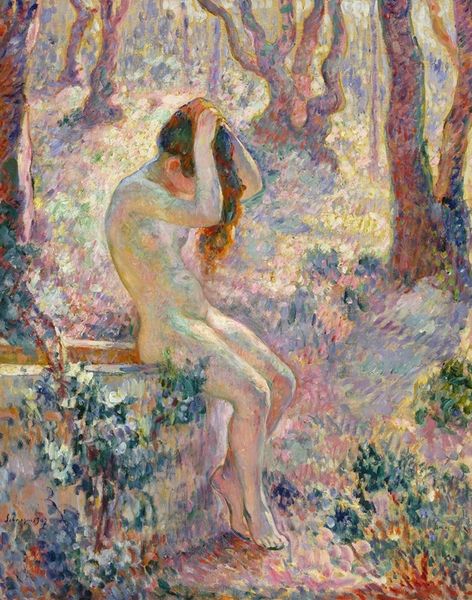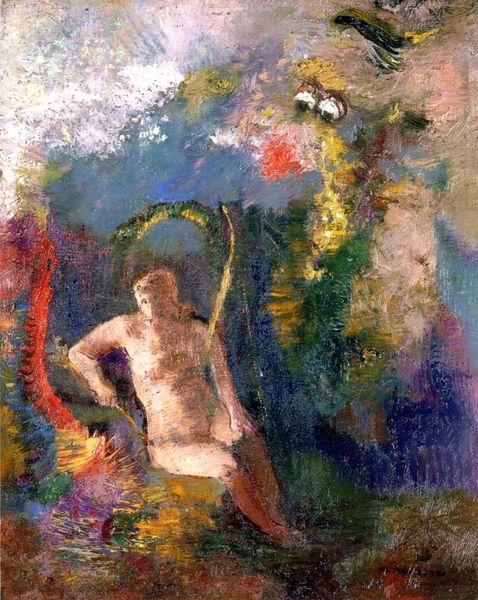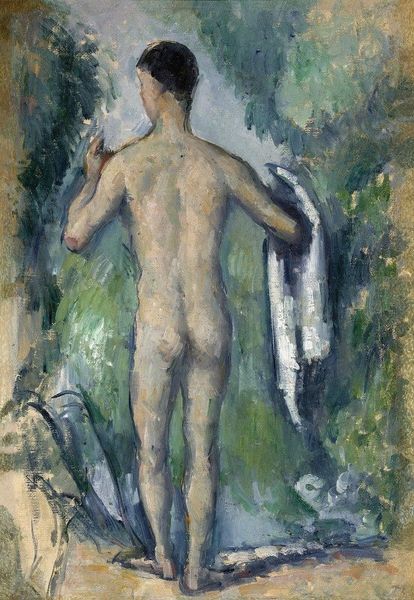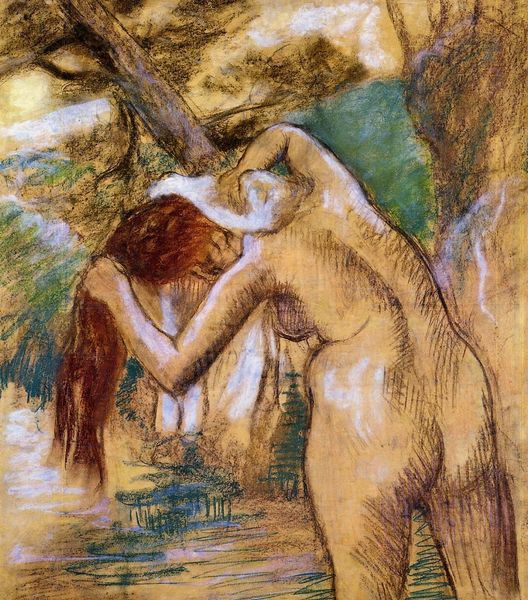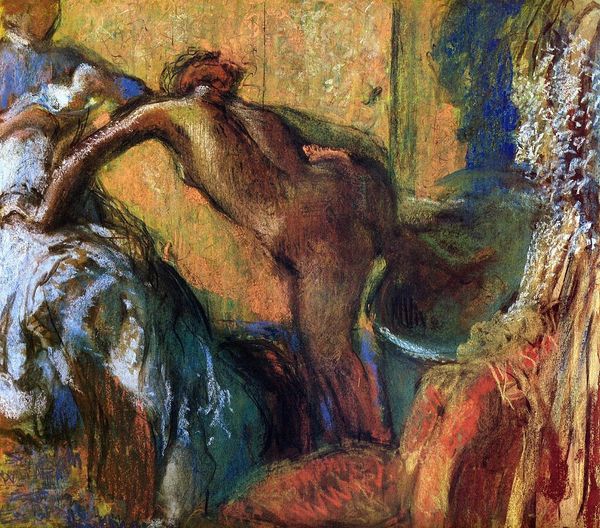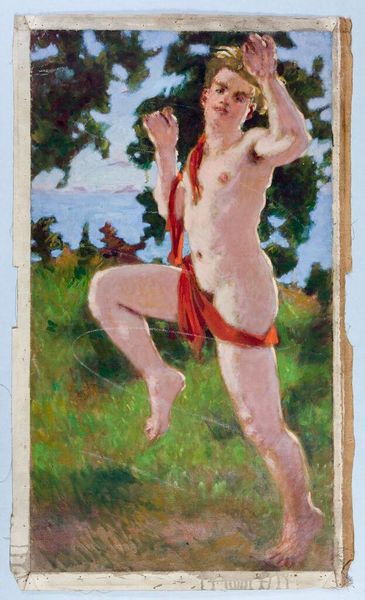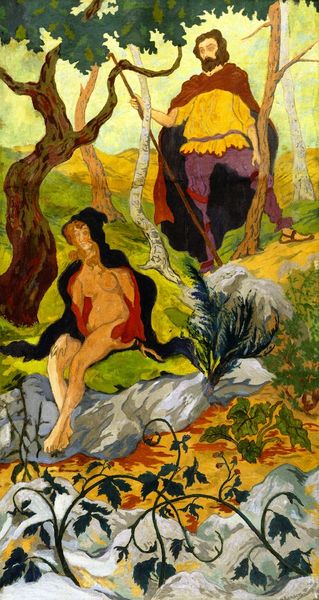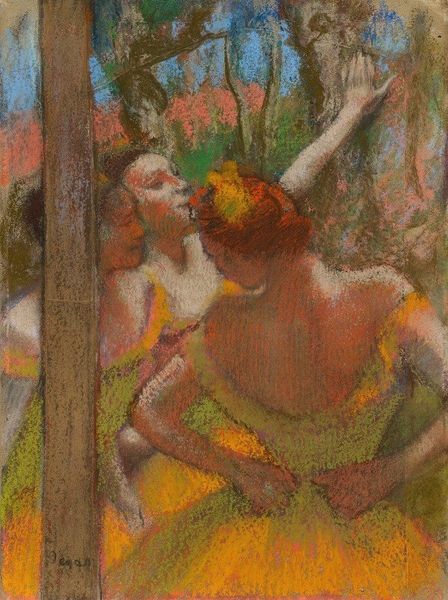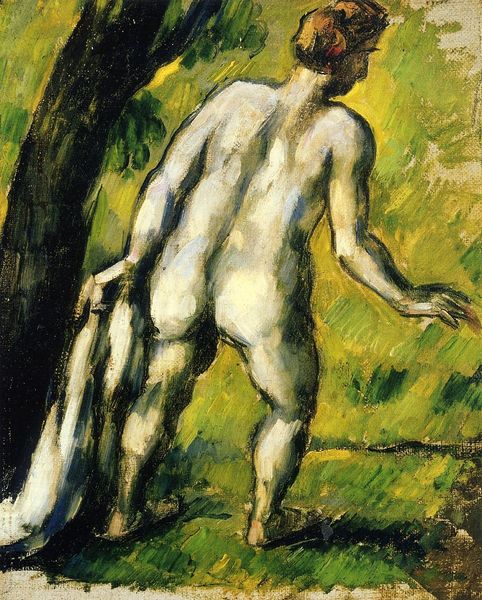
painting, oil-paint
#
fauvism
#
painting
#
oil-paint
#
landscape
#
impressionist landscape
#
figuration
#
form
#
oil painting
#
neo expressionist
#
geometric
#
expressionism
#
post-impressionism
#
nude
#
expressionist
Dimensions: 55 x 46 cm
Copyright: Public domain US
Curator: "Study for Wildlife. The man with the cluster," painted by Henri Matisse in 1905. It's an oil on canvas depicting a nude man in a landscape. I am immediately drawn to the use of vibrant colors. How do you read this artwork? Editor: It is hard for me not to see it in terms of traditional themes - harvest, the bounty of nature, an idealized human form… but, I don't know, something feels a bit off here, almost aggressive. Am I missing something? Curator: Focus on the materials. Notice the thick impasto and the way Matisse applies the paint. It's not blended smoothly. This directness disrupts any straightforward allegorical reading. How do these visible gestures of the hand impact the overall meaning for you? Editor: Well, I hadn’t thought of that exactly. So the brushstrokes and the way he uses oil paint, that itself carries meaning beyond just representation? I see what you mean – the raw application highlights the process of creation itself, pulling it away from idealization towards… labor? Curator: Exactly! And consider the social context. Matisse and his contemporaries were reacting against academic painting, questioning what constitutes 'high art.' This work challenges that by emphasizing the materiality of the medium, turning oil paint almost into a crafted substance. He’s pushing the boundaries, inviting us to reconsider the labor involved. Editor: So, it is as if the painting is about painting? He calls attention to the materiality of making an artwork. So I should think about the painting’s cultural production too? Curator: Precisely! It also shifts the focus from simply viewing to engaging with how the image came to exist in the first place. I mean, who harvested the materials needed for that canvas? What were working conditions like in the factories that processed oil-paint? Editor: I never considered all the levels of 'making' it involves! That's a perspective shift that completely alters my reading of the image. Thank you! Curator: Indeed, and that consideration allows us to truly appreciate the revolutionary aspect of Matisse’s work. It has opened up new possibilities of inquiry for me as well.
Comments
No comments
Be the first to comment and join the conversation on the ultimate creative platform.
